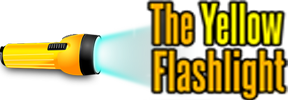Designers can use prompt-to-page methods to turn ideas into working landing pages while keeping full creative control. This guide explains how AI workflows speed iterations, keep brand consistency, and reduce repetitive work. You will learn practical steps to set up prompt pipelines, use design automation for routine tasks, and maintain quality throughout landing page generation.
Foundations of prompt to page — AI workflows and design automation

Start by defining measurable outcomes: conversion lift, publish time, and brand fidelity. A prompt-to-page pipeline works when humans steer machine outputs through clear checks and AI workflows.
Keep three deliverables visible:
- Clear style tokens and visual rules.
- Content inventory and prioritized CTAs.
- Component library mapped to final HTML/CSS.
Follow a concise prompt pattern. Begin with a design brief and a component spec list. Ask the model for structured JSON with copy segments and layout props.
A recent stat: the average landing page conversion rate sits at about 2.35% in 2025, and smart landing page generation with human review nudges that upward.
Design automation checkpoints
Automated linting, preview renders, and human review close the loop. Include accessible constraints and test content variations. Treat the process like graphic design craft guided by AI agents. Lock tokens for visual identity, the creative process, and branding strategy. Provide sample logos, digital artwork, and design tools references. For event pages, include photo booth templates. See our approach to automating repetitive design tasks for workflow examples.
Design controlled AI workflows
graphic design teams can build repeatable systems that balance speed with human judgment. Start with clear inputs: structured prompts, brand tokens, and personas. Recent data shows over 47% of digital teams adopted AI-driven automation tools by the end of 2024. Good AI workflows map tasks so designers stay in charge.
Core workflow components
- Input collection: persona-driven prompts and locked brand tokens.
- Engine orchestration: copy, layout, imagery, and CSS sequenced.
- Validation gates: accessibility, SEO, and performance tests.
- Output packaging: code snippets and asset manifests.
Use a detailed orchestration prompt. Call a copy model first and return three variants. Then run the layout model and generate a responsive grid JSON. Next, a token generator produces CSS variables. Later, automation creates hero image alternatives. These steps speed landing page generation while keeping a required designer sign-off.
Lock critical tokens and version prompts. Save good and bad outputs to refine constraints. These simple rules make design automation reliable. For more on practice, see AI in graphic design workflow.
Landing page generation techniques with AI workflows

Building on the previous chapter about Design controlled AI workflows, this chapter shows practical steps. A 2024 note found that AI workflows and design automation boost landing page conversion speed and performance. Teams start by defining component order and content rules. Our graphic design lead sets visual constraints.
Landing page generation checklist
Follow these generation steps:
- Assemble content into a defined component order.
- Generate semantic HTML with minimal, accessible markup.
- Attach CSS variables from design token output.
- Produce multiple image sizes and progressive loading.
Use short, task-specific prompts for SEO, responsive layout, and performance. Space iterations with metrics and user feedback. We orchestrate AI agents to automate A/B variant creation and analytics hooks. Pair that with modern design tools and scheduled prompt improvements. For automation examples, see our guide to automating repetitive design tasks.
From prototype to production: landing page generation
A clean handoff keeps design intent intact when prototypes become live sites. In 2024, over 70% of companies began transitioning AI-driven landing pages from prototypes to production, boosting human-led workflows and conversion. This matters when teams focus on graphic design and accessibility. A solid export bundle prevents guesswork.
Handoff checklist for AI workflows
- Export component code with comments mapping to prompt tokens.
- Provide an asset manifest with responsive sources and optimization levels.
- Include an accessibility report and remediation tasks.
- Attach a test plan for cross-browser and device checks.
Developer integration prompts make the handoff actionable. Generate a README with usage examples and expected props. Create unit test skeletons that assert key DOM elements and ARIA attributes. Produce deployment instructions with cache headers, CDN settings, and analytics. These steps accelerate reliable design automation.
Set up monitoring to flag regressions in performance or conversion. Plan quarterly prompt audits to keep copy and layouts current. Pair this workflow with automated design QA to catch regressions early and refine your landing page generation approach.
Final words
Prompt-to-page systems let designers scale landing page generation without giving up authorship. By creating clear AI workflows, locking brand constraints, and building checkpoints, teams can speed iteration and keep quality high. Use design automation to remove repetitive work while focusing human effort on strategy, testing, and refinement so every landing page drives measurable outcomes.
